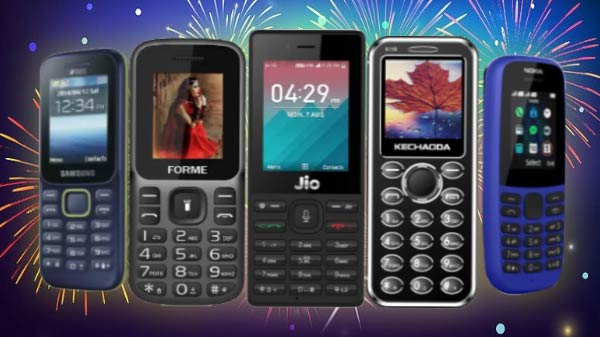India, known as one of the fastest-growing smartphone markets globally, is witnessing an unexpected resurgence in the popularity of keypad phones. Amidst the smartphone revolution that has dominated the country for over a decade, a notable shift is occurring as a significant segment of users are choosing simplicity over sophistication. This resurgence, driven by a growing dissatisfaction with the overwhelming features of smartphones, highlights a counter-trend in India’s diverse tech landscape.
The Decline of Smartphones’ Allure
Smartphones have become ubiquitous in India, with over 700 million users as of 2023. However, the allure of these devices is waning for some, particularly among older adults, rural populations, and those seeking digital detox. The rapid evolution of smartphones has brought about devices that are increasingly complex, feature-heavy, and often associated with digital fatigue. This has led to a section of consumers opting for more straightforward, distraction-free mobile experiences, rekindling the demand for keypad phones.
Keypad Phones: A Return to Basics
Keypad phones, often referred to as feature phones, offer a stark contrast to their smartphone counterparts. These devices are equipped with basic functionalities—such as calling, texting, and limited internet access—making them appealing to those who prefer a minimalist approach to technology. The absence of social media apps, addictive games, and constant notifications makes keypad phones particularly attractive to users seeking to reduce screen time and reclaim a sense of control over their daily lives.
Market Trends and Statistics
The resurgence of keypad phones in India is reflected in market data. According to Counterpoint Research, feature phones accounted for nearly 22% of the total mobile phone shipments in India in 2023, up from 18% in the previous year. This growth is significant, considering the overall mobile phone market’s maturity.
One of the leading manufacturers capitalizing on this trend is HMD Global, the maker of Nokia phones. Nokia’s feature phones have seen a revival, with the brand maintaining a strong presence in the market. In 2023, Nokia’s feature phone shipments grew by 12% year-on-year, with the company capturing a 15% share of the feature phone market in India.
Similarly, homegrown brands like Lava and Micromax have also seen increased demand for their keypad phones, particularly in rural areas and among older consumers. These brands have responded by launching new models with enhanced battery life, sturdy designs, and affordable pricing, catering to the specific needs of their target audiences.
Digital Detox and Mental Health Concerns
A significant factor contributing to the resurgence of keypad phones is the growing awareness of digital detox and mental health. As smartphones have become central to modern life, concerns about their impact on mental health have escalated. Studies have linked excessive smartphone use to anxiety, depression, and sleep disturbances, leading many to seek ways to disconnect from the digital world.
Keypad phones, with their limited features, offer an effective solution for those looking to reduce their dependence on smartphones. By using a feature phone, users can maintain essential communication without the constant barrage of information, notifications, and social media updates that characterize smartphone use.
The Rural and Senior Markets
The resurgence of keypad phones is also driven by their popularity in rural areas and among older adults. In rural India, where internet connectivity can be inconsistent and access to advanced technology is limited, feature phones remain the preferred choice. These devices are not only more affordable but also more durable, making them ideal for the rugged conditions often found in rural regions.
For older adults, keypad phones offer familiarity and ease of use. Many senior citizens find the touchscreen interfaces of smartphones challenging to navigate and prefer the tactile buttons of feature phones. The simplicity of these devices, combined with their long battery life, makes them a practical choice for seniors who prioritize straightforward communication tools over complex technology.
The Role of Affordable Pricing
Affordability plays a crucial role in the continued demand for keypad phones. While smartphones have become more accessible in terms of pricing, feature phones remain significantly cheaper. This affordability is particularly important in a price-sensitive market like India, where a large portion of the population still earns modest incomes.
The average price of a feature phone in India ranges between ₹1,000 to ₹2,500, making it an attractive option for those who cannot afford a smartphone or do not see the value in spending more on a device with features they do not use. This price point also makes feature phones an ideal secondary device for smartphone users who want a backup phone with basic functionalities.
Challenges and Future Prospects
Despite their resurgence, keypad phones face several challenges. The proliferation of affordable smartphones and increasing internet penetration continue to drive the overall growth of the smartphone market. Furthermore, the younger generation, which values connectivity and access to social media, is less likely to embrace feature phones.
However, the niche market for keypad phones is expected to persist. As long as there is a demand for simple, reliable, and affordable communication devices, feature phones will continue to have a place in India’s diverse mobile landscape. The market may not see explosive growth, but steady demand from specific segments will ensure the longevity of keypad phones.
Conclusion
The resurgence of keypad phones in India reflects a broader trend of consumers seeking simplicity amidst the overwhelming complexity of modern technology. Driven by digital fatigue, mental health concerns, and the practical needs of rural and older populations, feature phones are making a quiet comeback. While smartphones will undoubtedly continue to dominate the market, the enduring appeal of keypad phones suggests that there is still value in the basics. As India continues to navigate its digital transformation, the coexistence of both feature phones and smartphones highlights the diversity and adaptability of its mobile market.





